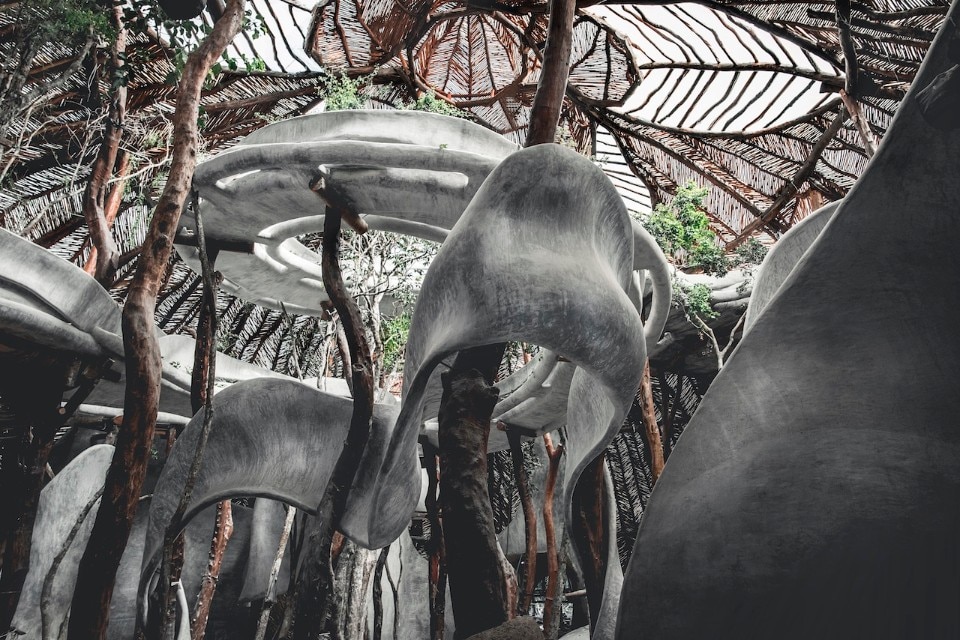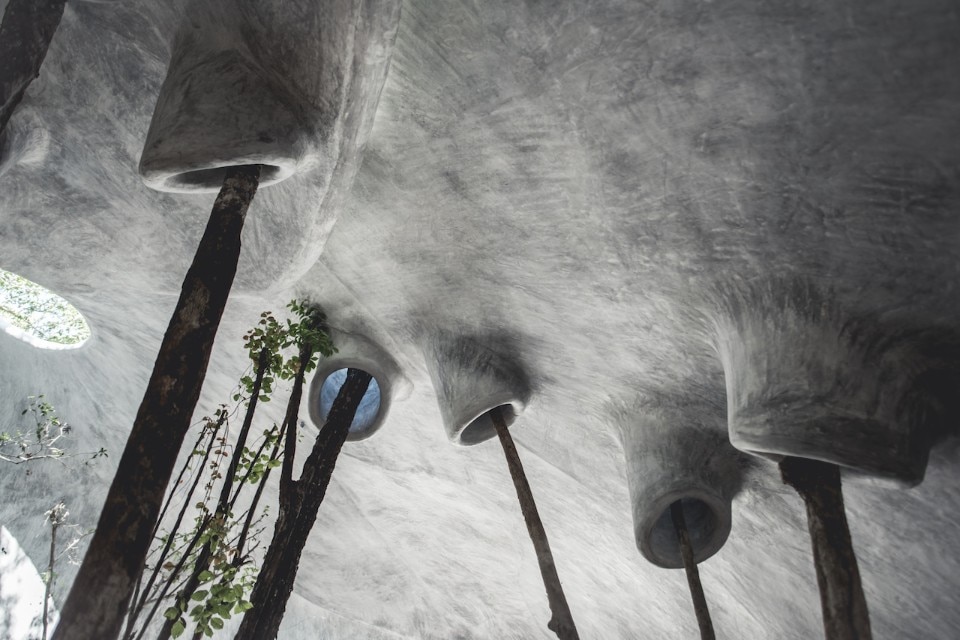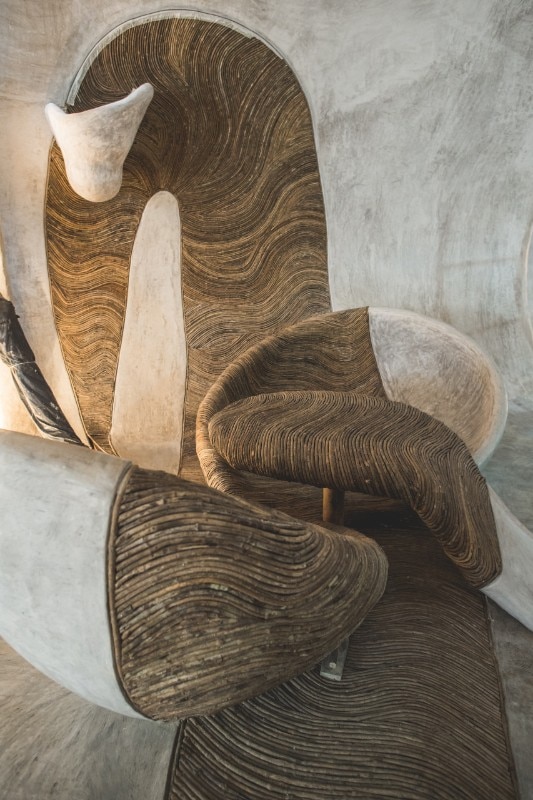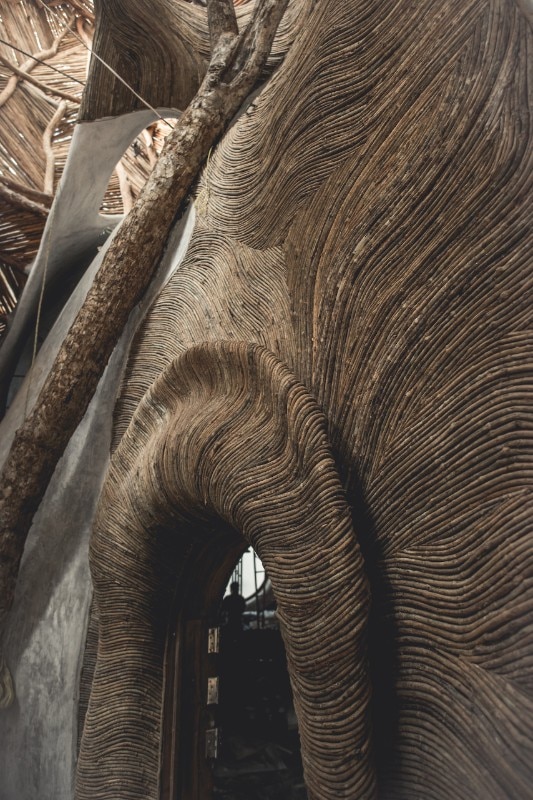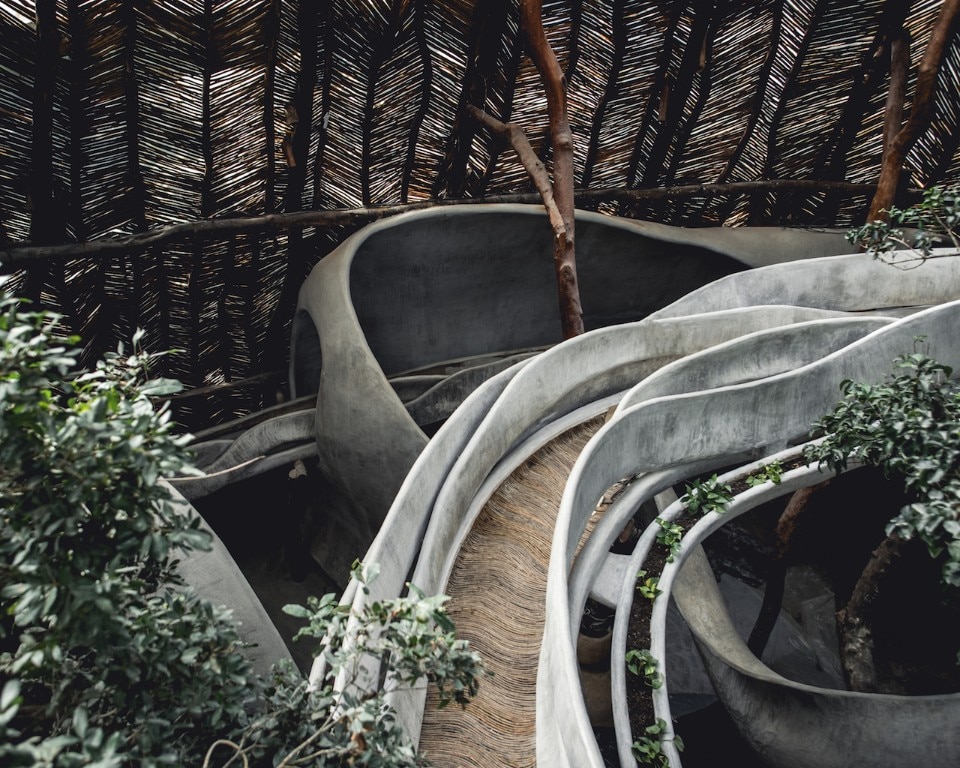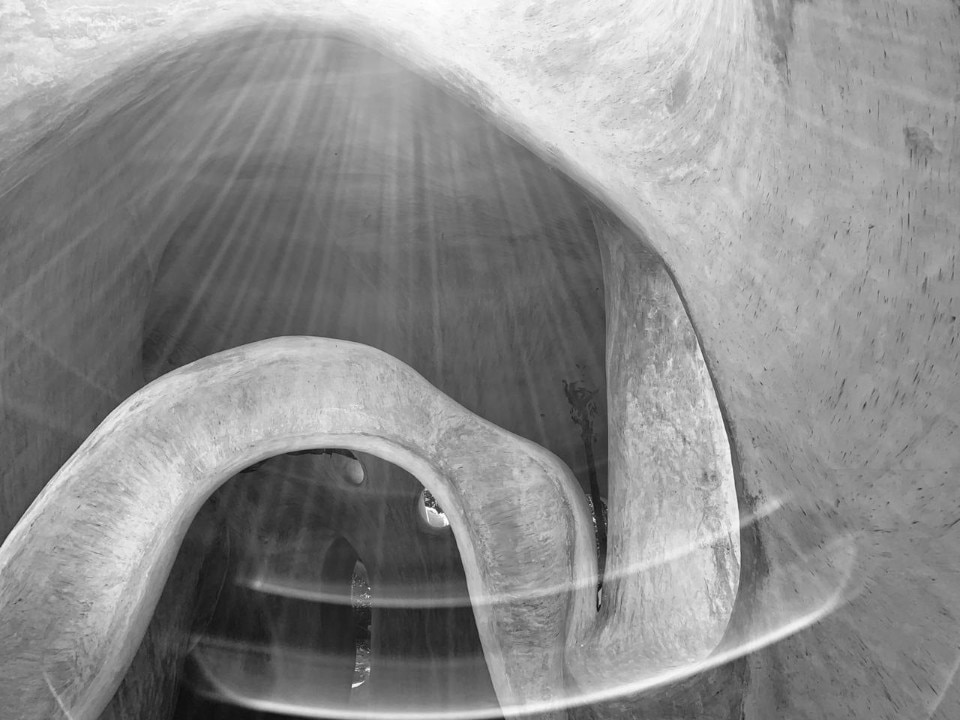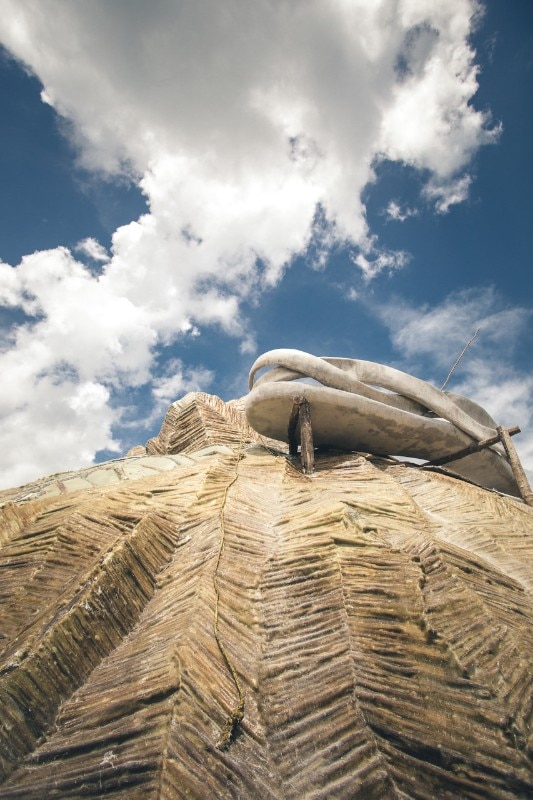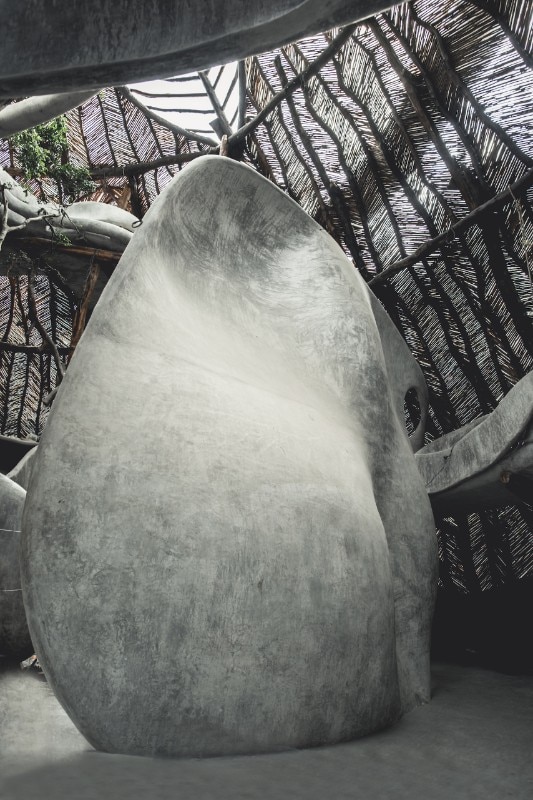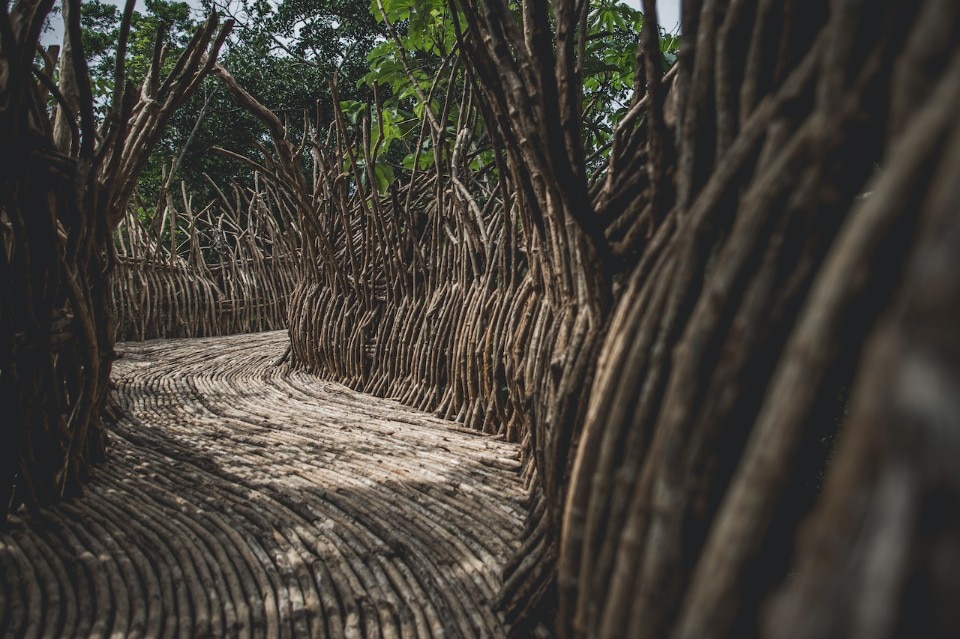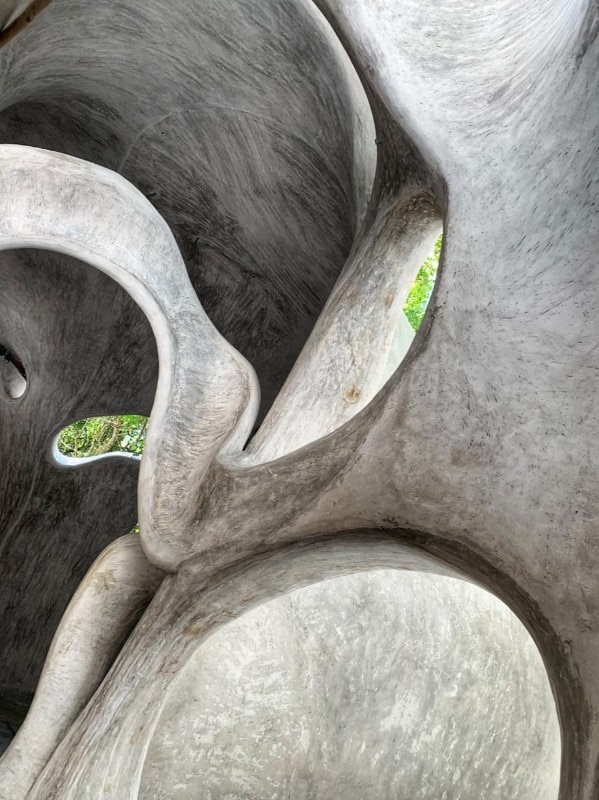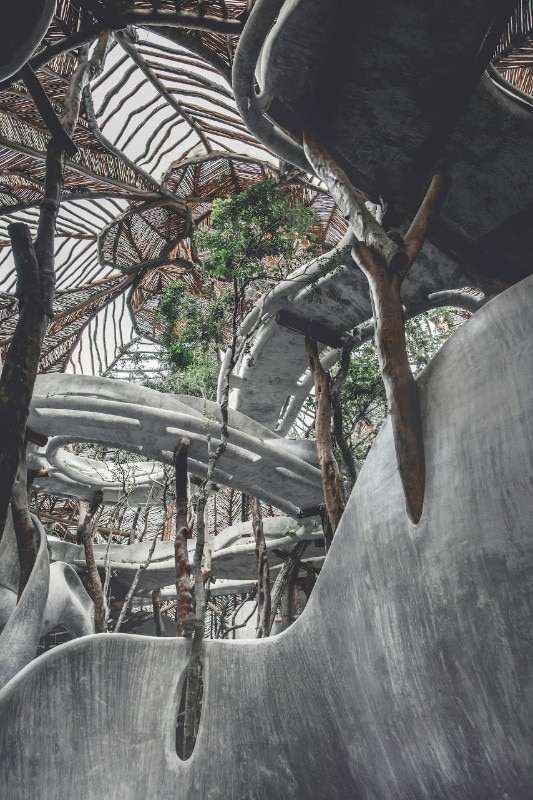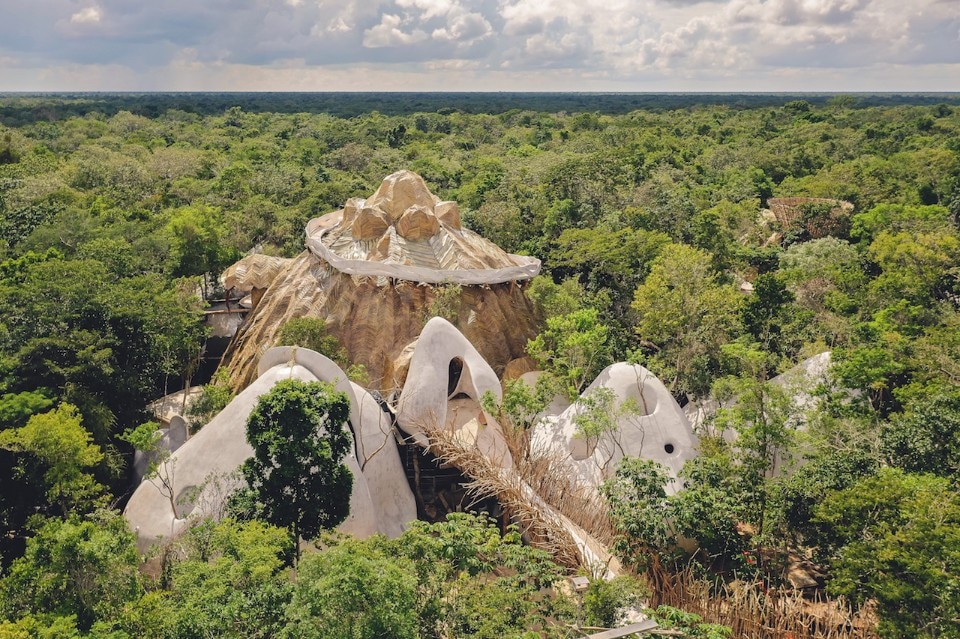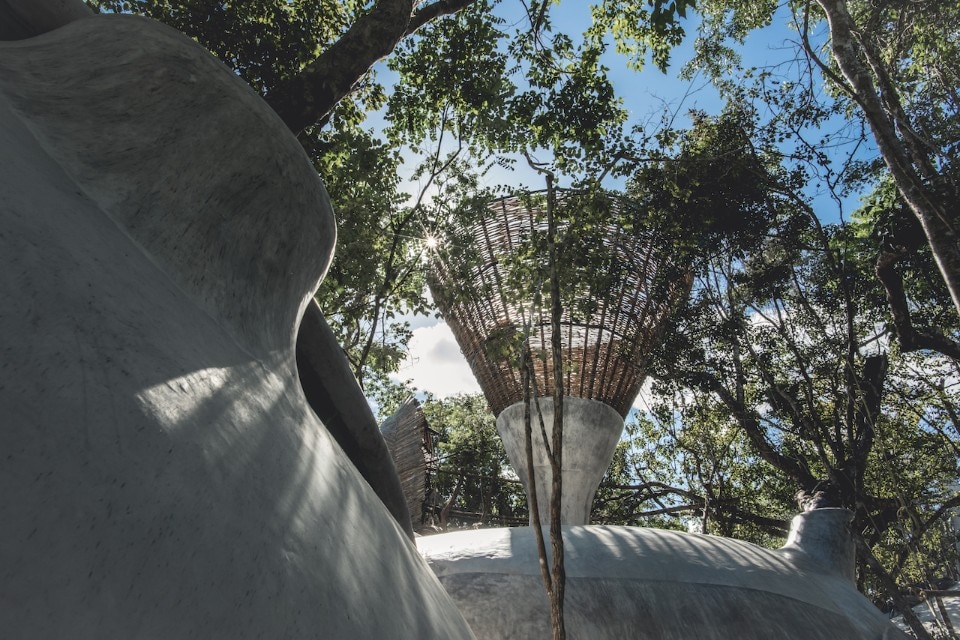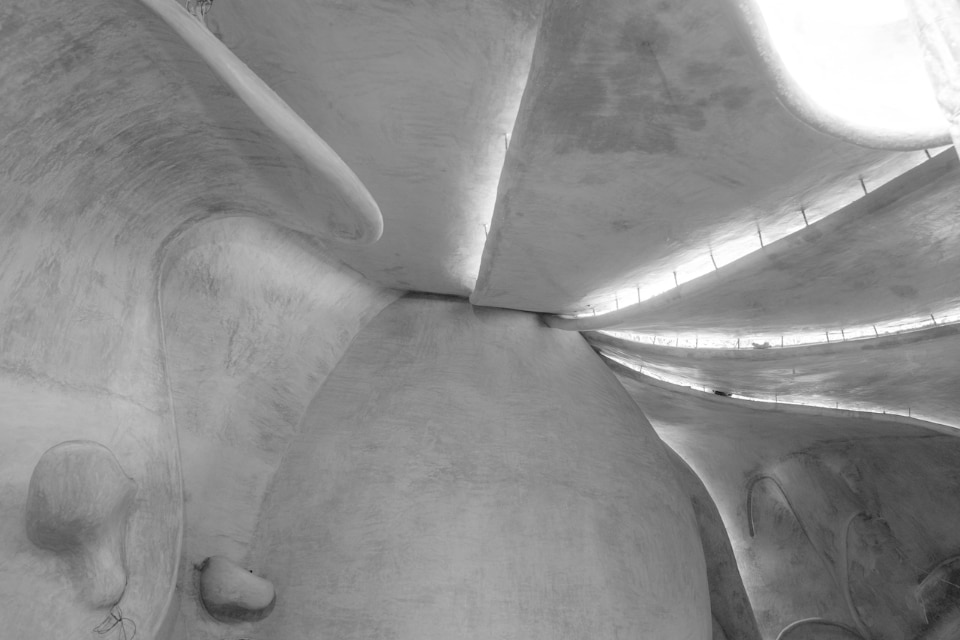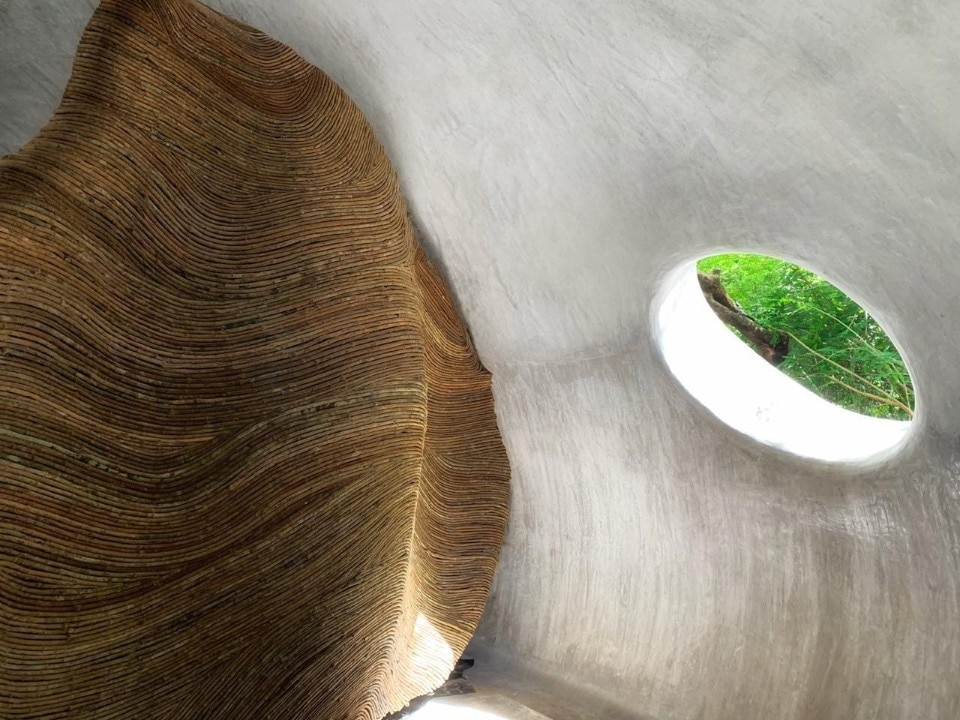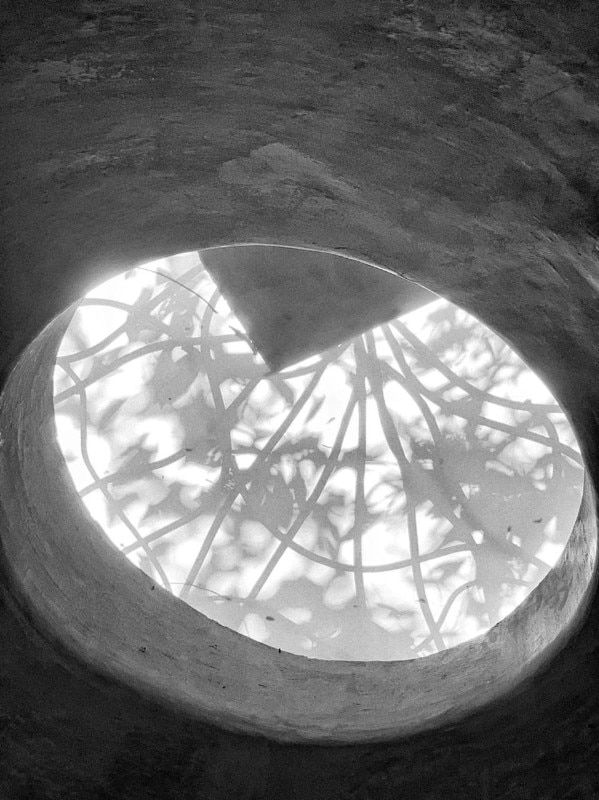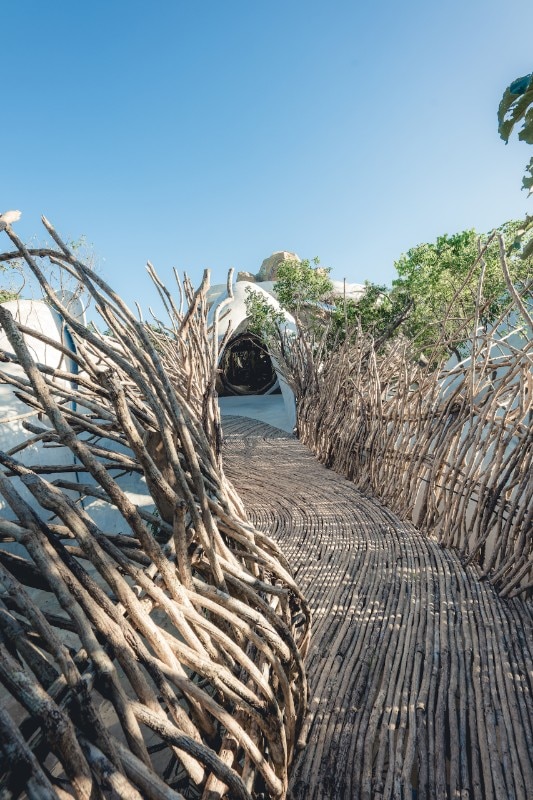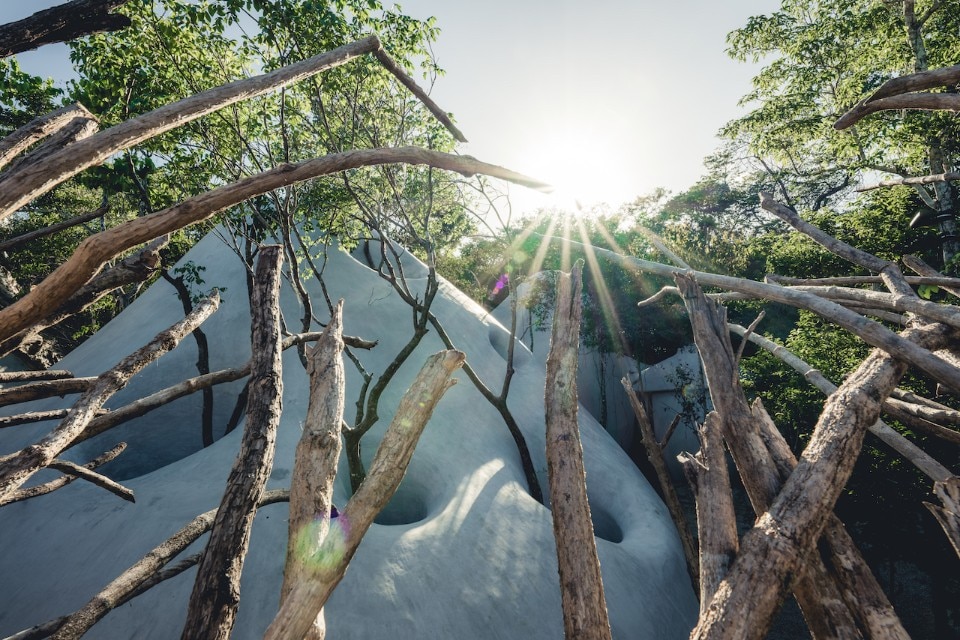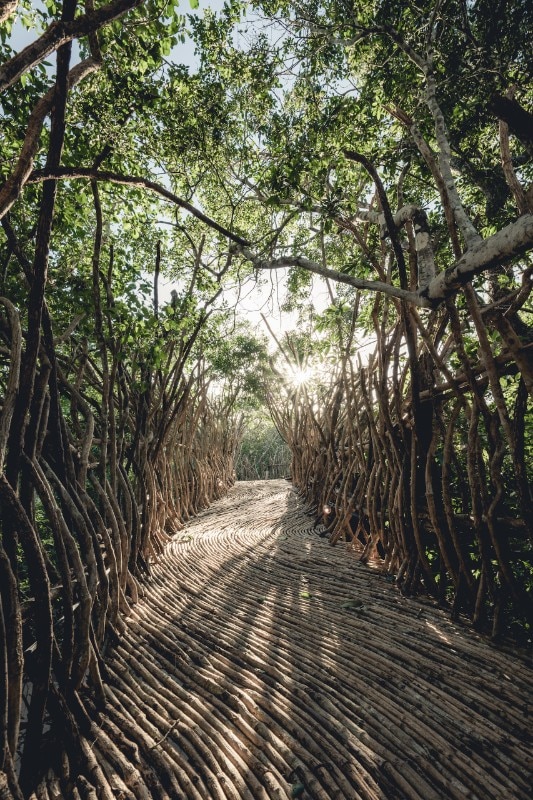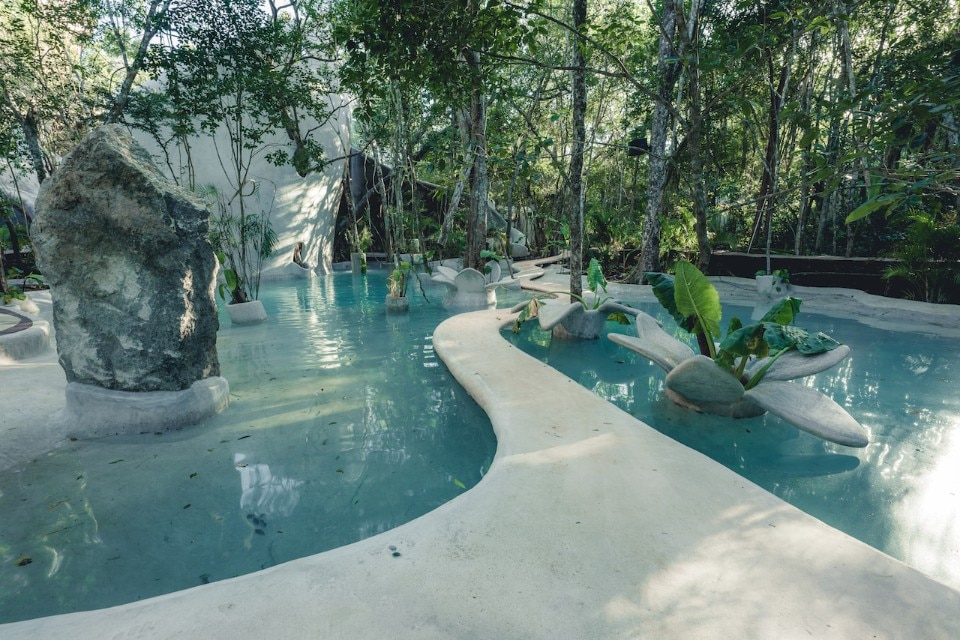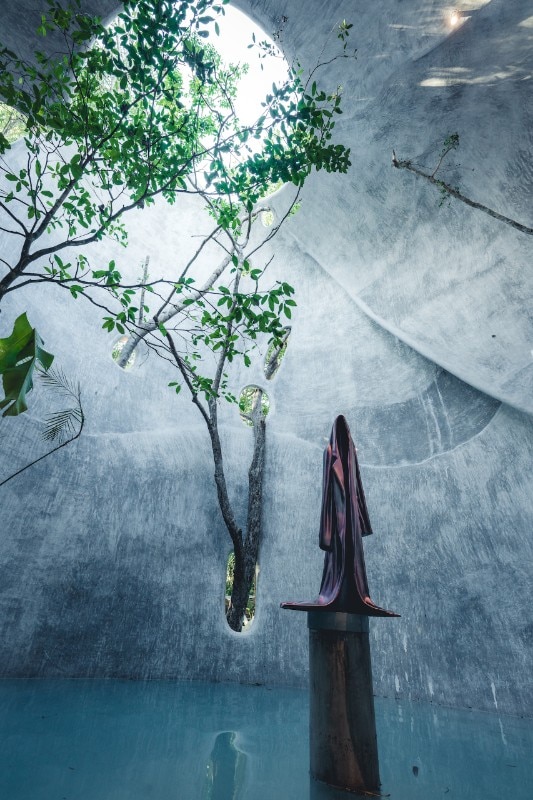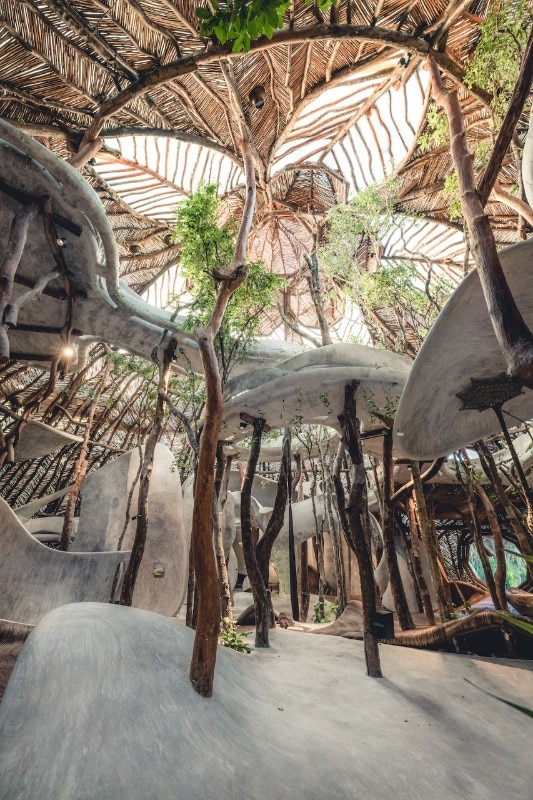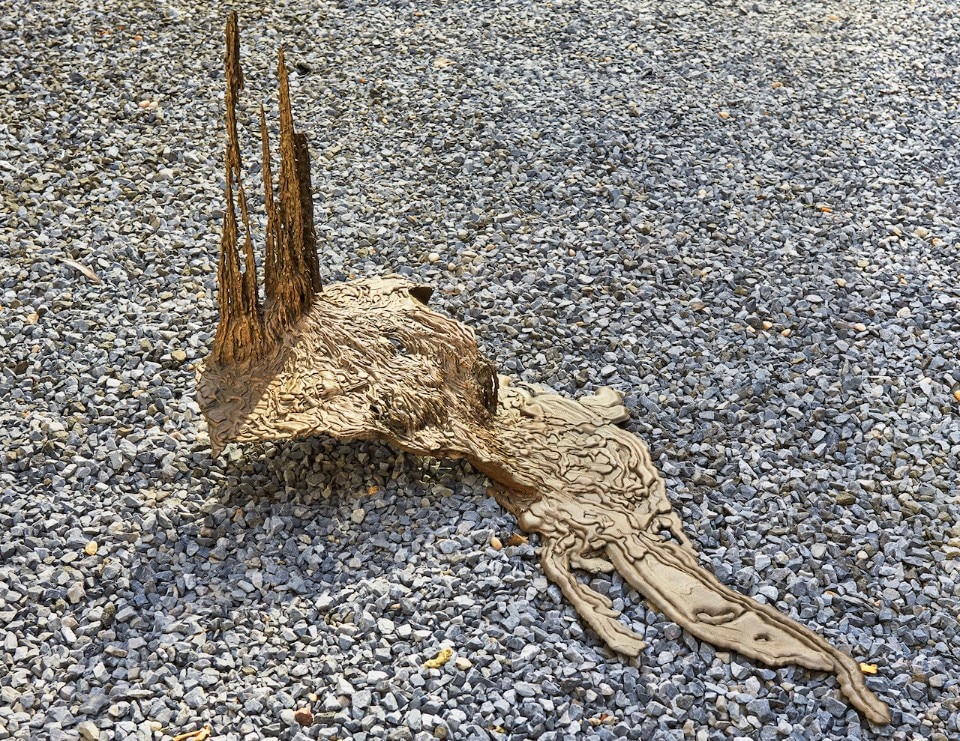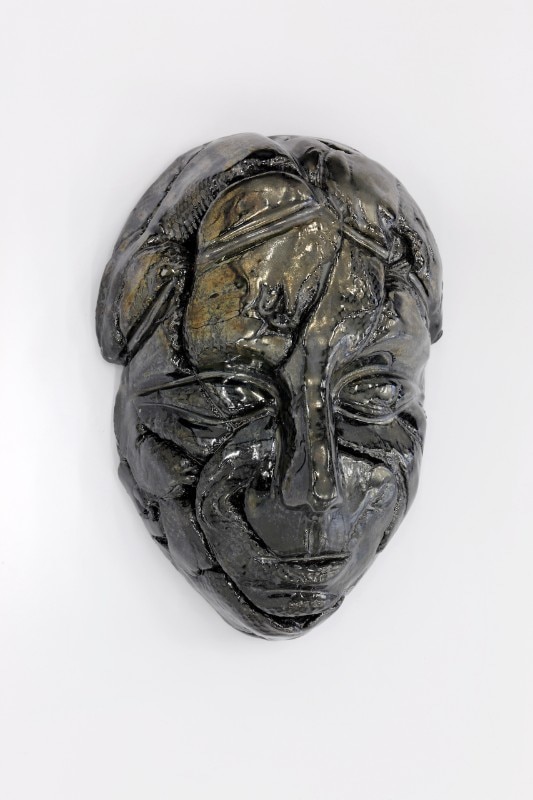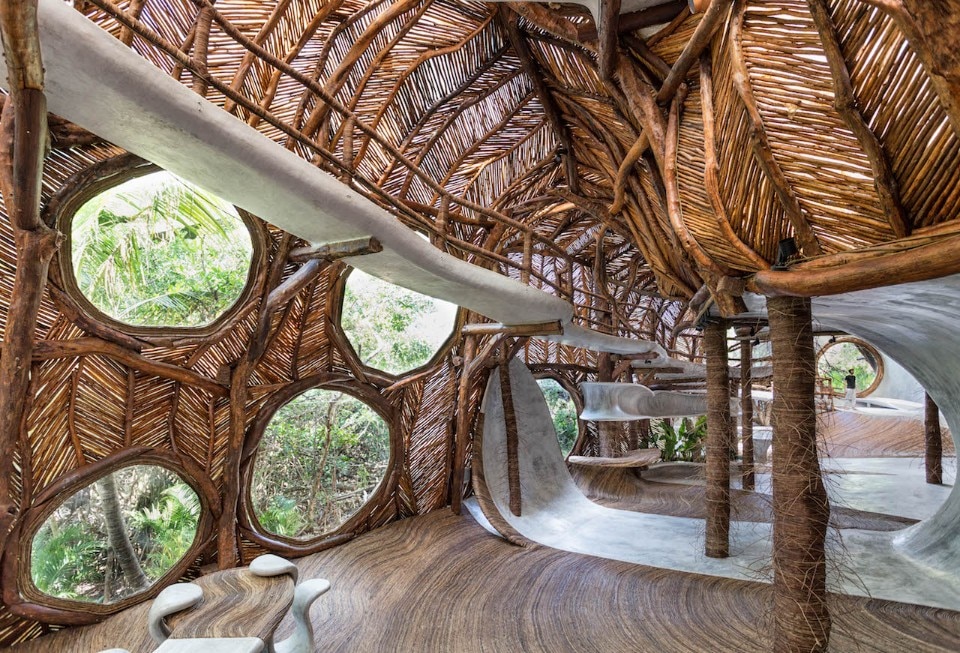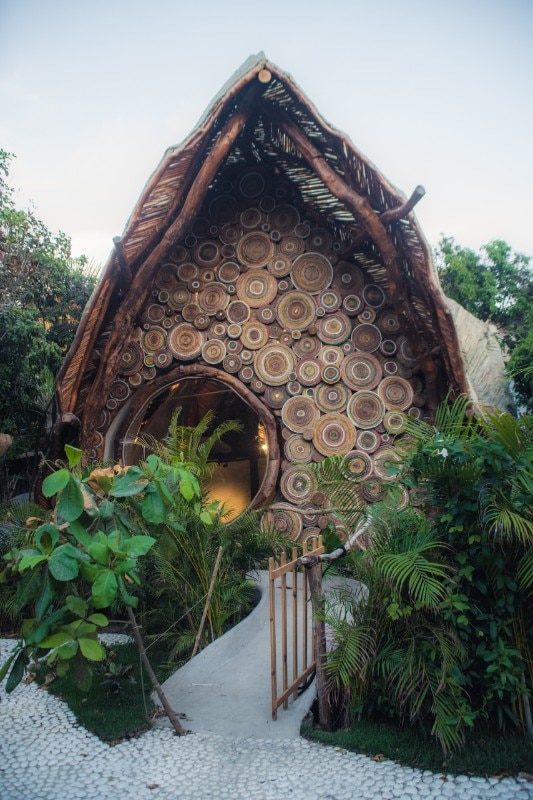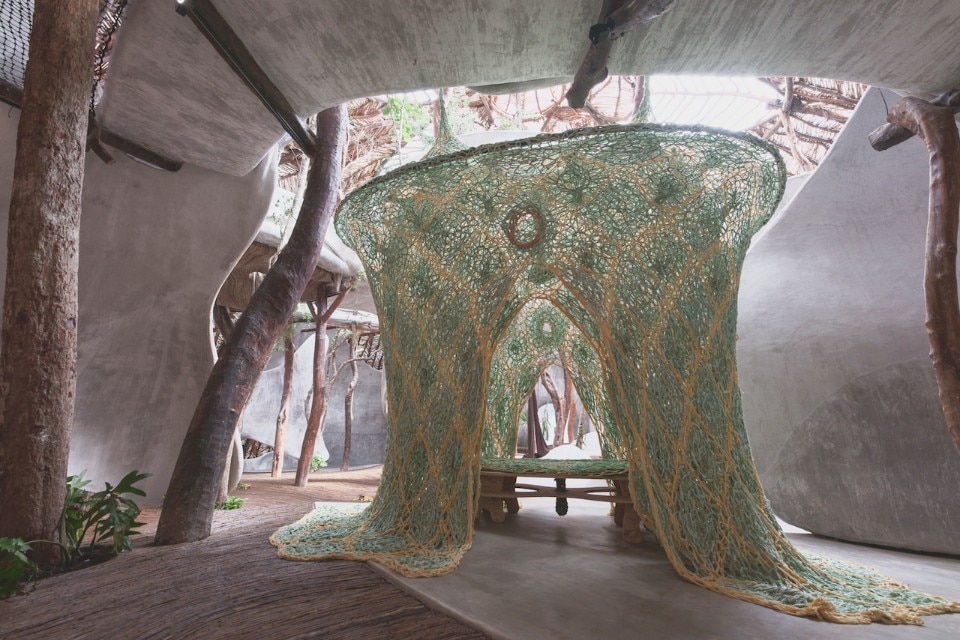On the Yucatán peninsula, one of the most spectacular resorts on our planet has opened a space inside, as if it were a Russian nesting doll. It is a transdisciplinary production and creation centre that joins art, design, fashion in a holistic universe entirely devoted to physical and mental wellbeing.
Its name is Azulik Uh May, and was born from the experience of Azulik – a collection of luxury residences and villas that create a sinuous, eco-friendly network overlooking the ocean or inside jungles, conceived in Tulum by the social entrepreneur and self-taught architect Roth (Eduardo Neira). The centre rounds off the work begun by IK Lab Tulum, the exhibition venue directed by Claudia Paetzold and assisted by Santiago Rumney Guggenheim – the great-grandson of the legendary Peggy.
The form of this location is that of a nest made with local vines and synthetic cement; it is found within the jungle and is studded with trees and plants that, by growing, will transform the undulated curve visible to the eyes of visitors today. The initiative continues with an education programme, which relaunches and reconsiders the entire sense of the Azulik operation.
Today, the centre is the beating heart of a school of arts and trades – with master classes and workshops held by artists in collaboration with local communities – where the culture of Mayan civilisation intermingles with contemporary aesthetics. A residence, a school, a gallery are three instances of the circle of life – domesticity, education and entertainment – that give impulse and identity to people by repeating everyday behaviours, habits and choices.
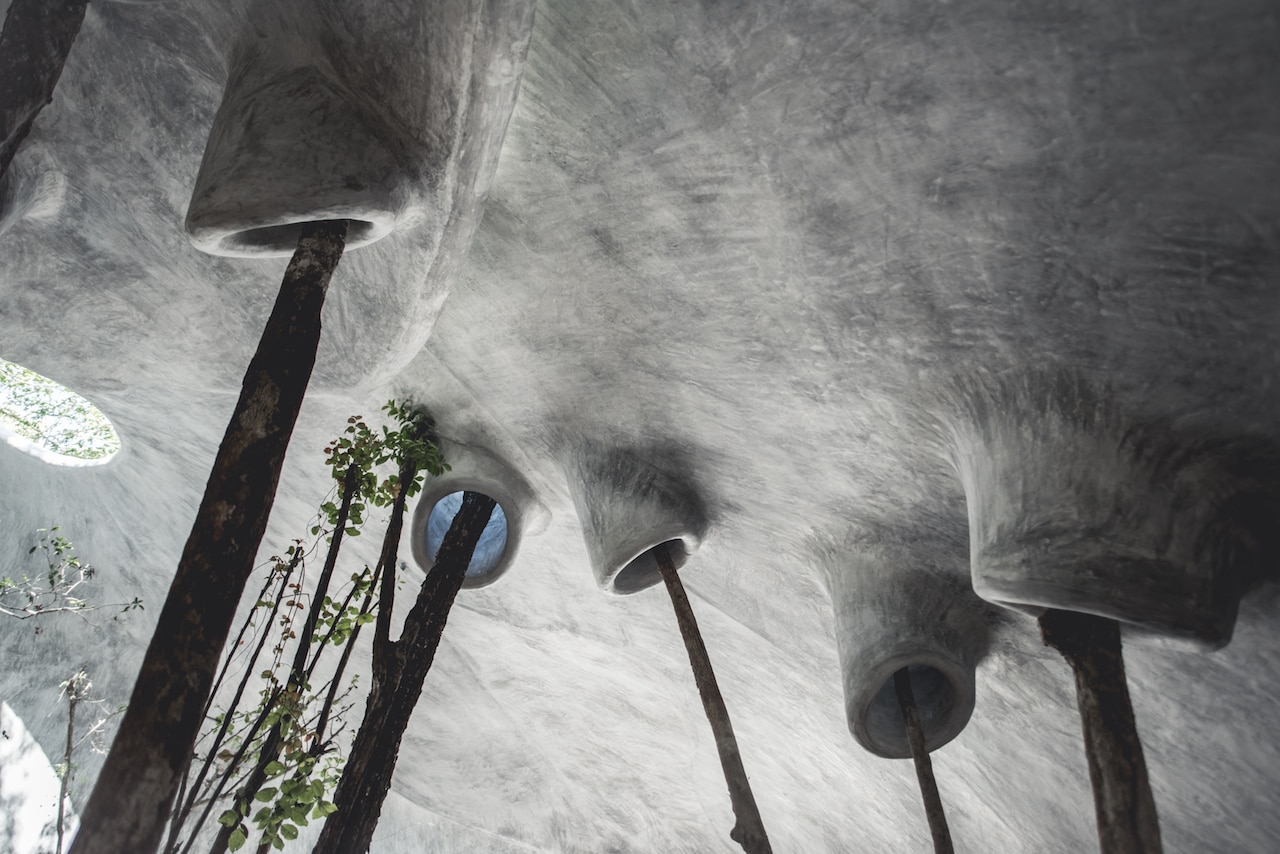
 View gallery
View gallery
What meaning do art production and display centres have today? Where would modern civilisation now establish a new “school of building” amidst ancestral rites and new technologies? Which socio-cultural conditions could re-establish the very idea of modernity or anti-modernity between the gallery, the home and the public space? Is the peninsula the new Chelsea?
Paradoxes aside, it is indeed true that the inclination of the Azulik Uh May Centre is the same that informs the entire vision of the place: satisfying the needs of man in synch with the times and the forms of nature within an attitude that looks upon ecology, spirituality, art and architecture as elements of a single living organism – topics that are, by the way, quite important to artists, designers and architects who must come to grips with and anticipate the effects of AI or AR and a growing need for scientific spirituality. The centre’s courses favour an approach to learning through experiences and material culture (ceramics, vines, clay...) together with the use of advanced technology (from 3D printing to digital).
So it should come as no surprise that future developments in the Azulik project will include the expansion of its adventure starting with its mission to educate. The resort will grow not in the number of rooms, but in the research workshops on medicine and health, technology and sustainable development, art museums and residences. Besides, the IK Lab gallery is a multi-sensory experience where participants can reflect on what an art space means today. Not intended for minors under the age of 18, it is free, open every day from 10 am to 10 pm. Participants enter barefoot; the floor, like every surface, is irregular, and taking pictures is prohibited – preference is given to the memory of the body and the senses rather than sight, even though, as was already the case for the broader and more historicised fields of Land Art, the “post” temptation is totally irresistible.
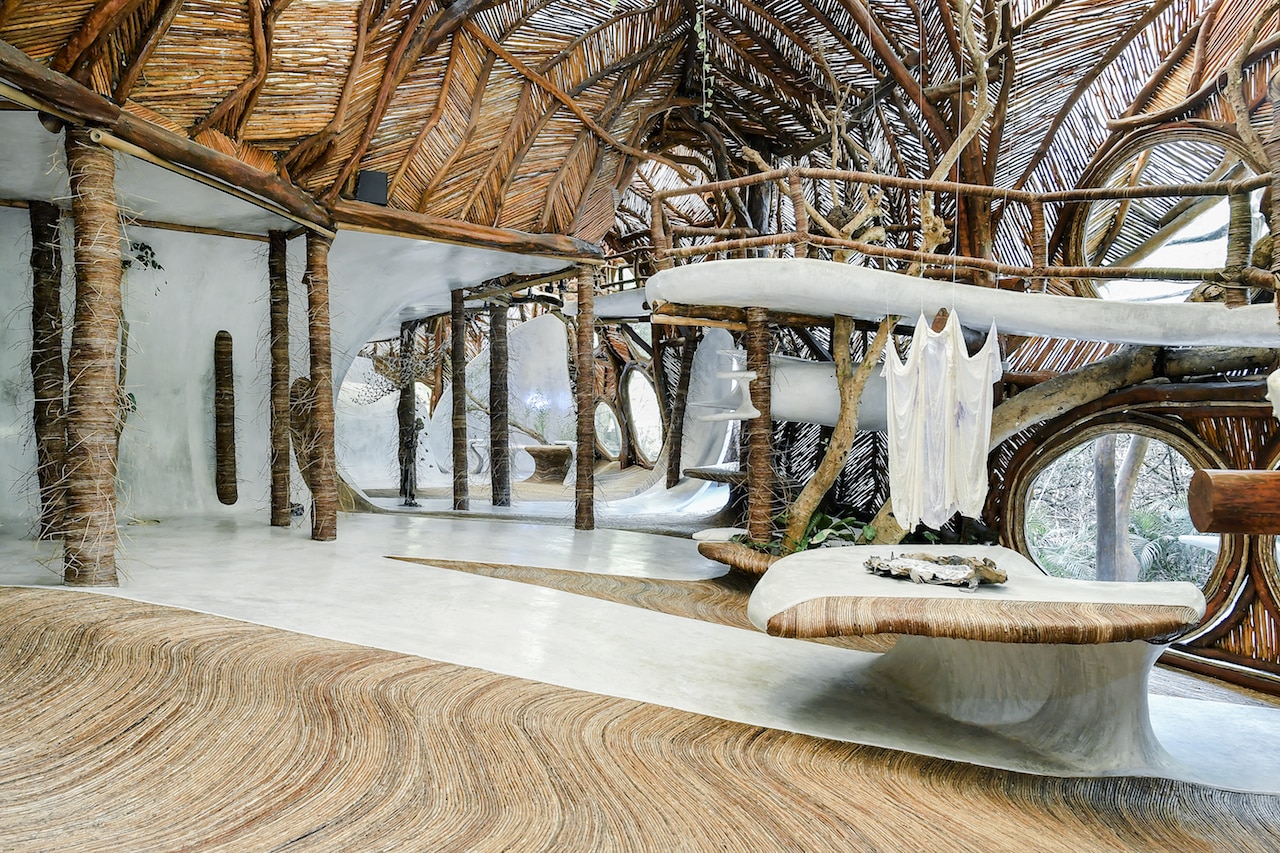
 View gallery
View gallery
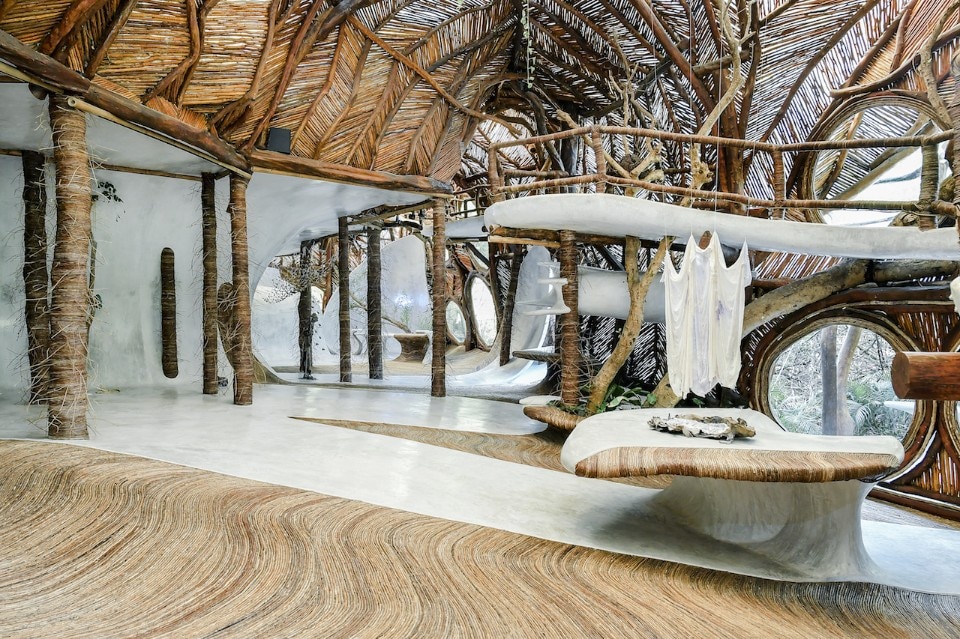
Alchemistry
Installation view, Tegeticula Yuccasella and Here, Not Here (Psíquico), 2019 by Bianca Bondi, for Alchemistry at SFER IK, 2019
Courtesy of SFER IK
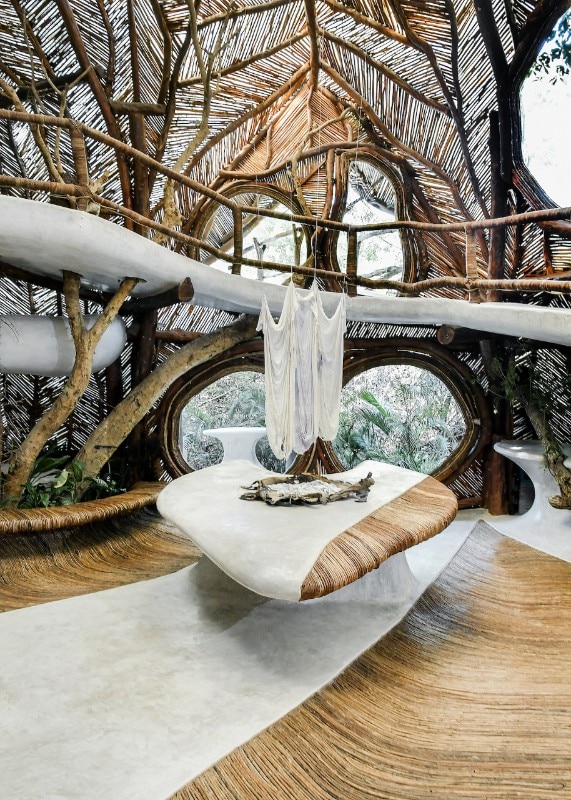
Alchemistry
Installation view, Bianca Bondi, Tegeticula Yuccasella, 2019, for Alchemistry at SFER IK, 2019
Courtesy of SFER IK
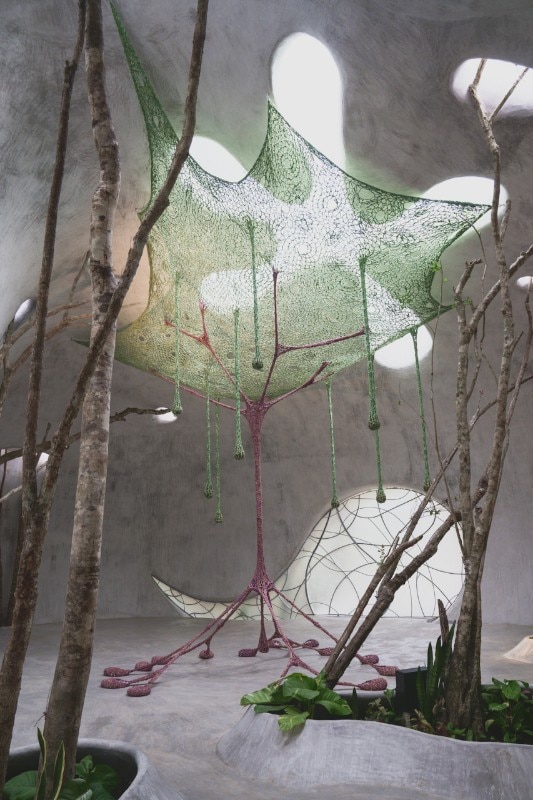
Healing House
Installation view, Ernesto Neto, Healing House, for Conjunctions at SFER IK. Copyright Enchanting Transformation 2018
All Rights Reserved
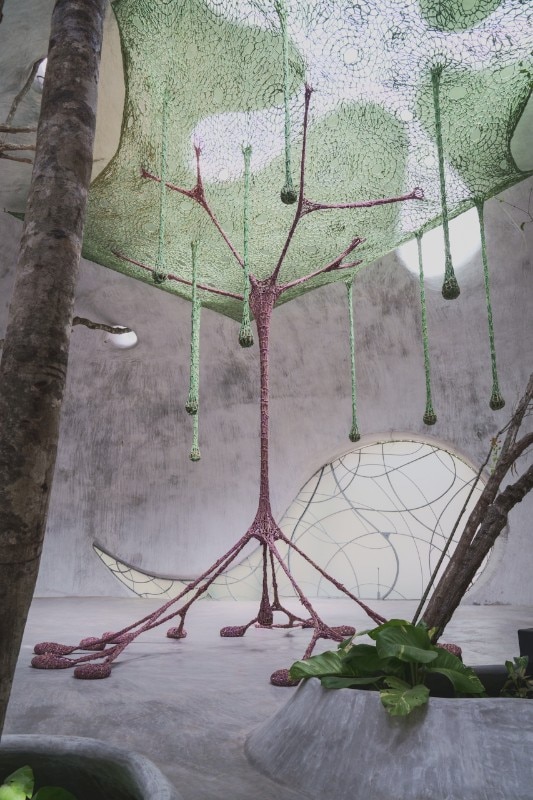
Healing House
Installation view, Ernesto Neto, Healing House, for Conjunctions at SFER IK. Copyright Enchanting Transformation 2018
All Rights Reserved
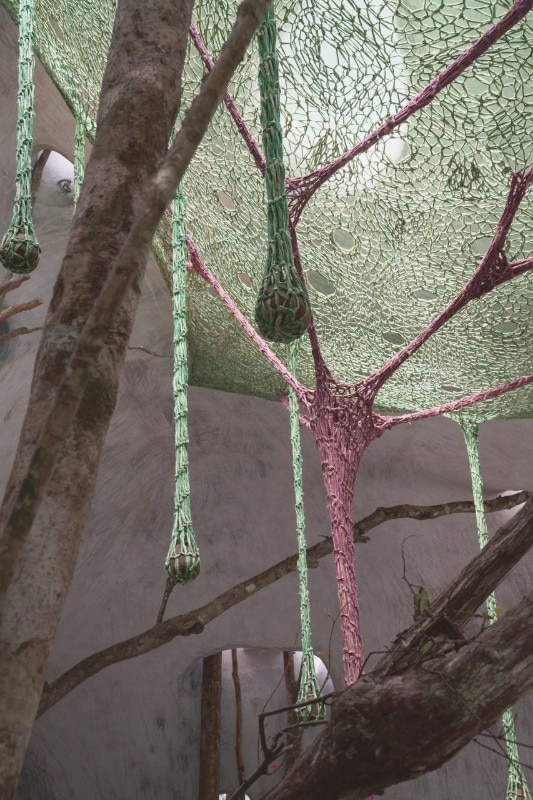
Healing House
Installation view, Ernesto Neto, Healing House, for Conjunctions at SFER IK. Copyright Enchanting Transformation 2018
All Rights Reserved
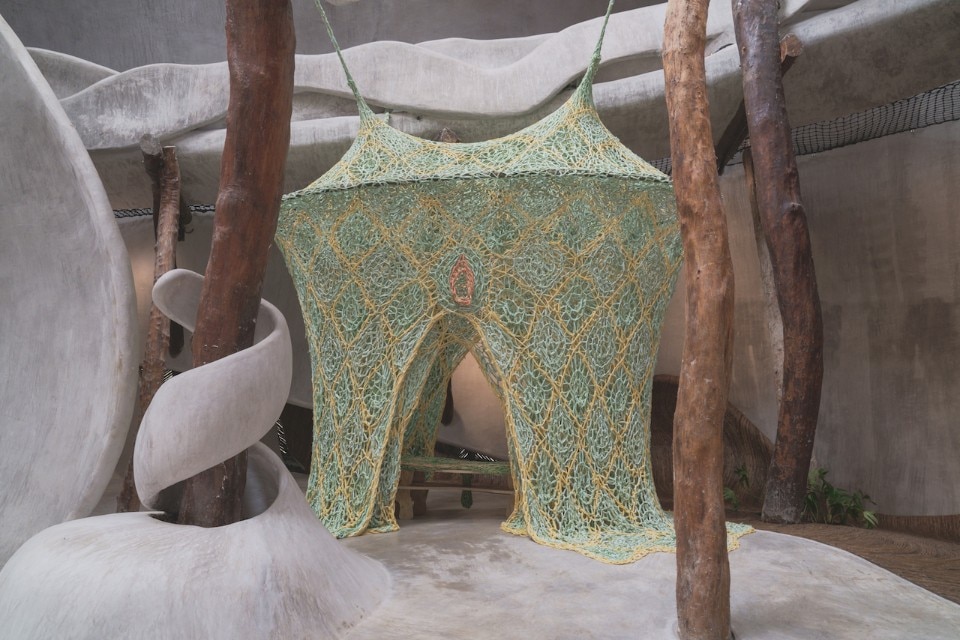
Healing House
Installation view, Ernesto Neto, Healing House, for Conjunctions at SFER IK. Copyright Enchanting Transformation 2018
All Rights Reserved
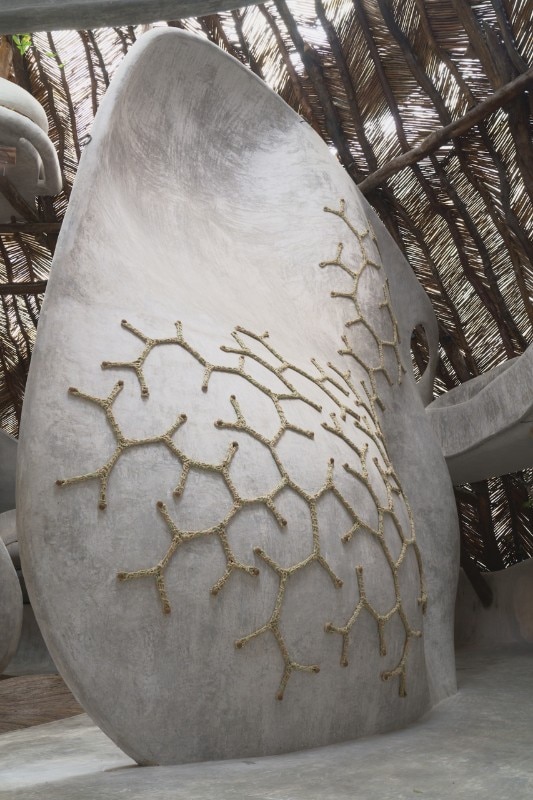
Healing House
Installation view, Ernesto Neto, Healing House, for Conjunctions at SFER IK. Copyright Enchanting Transformation 2018
All Rights Reserved

Alchemistry
Installation view, Tegeticula Yuccasella and Here, Not Here (Psíquico), 2019 by Bianca Bondi, for Alchemistry at SFER IK, 2019
Courtesy of SFER IK

Alchemistry
Installation view, Bianca Bondi, Tegeticula Yuccasella, 2019, for Alchemistry at SFER IK, 2019
Courtesy of SFER IK

Healing House
Installation view, Ernesto Neto, Healing House, for Conjunctions at SFER IK. Copyright Enchanting Transformation 2018
All Rights Reserved

Healing House
Installation view, Ernesto Neto, Healing House, for Conjunctions at SFER IK. Copyright Enchanting Transformation 2018
All Rights Reserved

Healing House
Installation view, Ernesto Neto, Healing House, for Conjunctions at SFER IK. Copyright Enchanting Transformation 2018
All Rights Reserved

Healing House
Installation view, Ernesto Neto, Healing House, for Conjunctions at SFER IK. Copyright Enchanting Transformation 2018
All Rights Reserved

Healing House
Installation view, Ernesto Neto, Healing House, for Conjunctions at SFER IK. Copyright Enchanting Transformation 2018
All Rights Reserved
This all seems interesting, not only because it intercepts the theme of art as a shrine to ecology, spirituality and wellbeing, but also because it reclaims the curative properties of educational processes by leading the experience of knowledge back to the dimension of building, of exchange, of intermingling between cultures.
Such a small yet potential cultural infrastructure has not only held unique exhibitions – given the context and conditions of production – by artists like Ernesto Neto, Tatiana Trouvè, Paulo Nazareth or the one currently underway, on Kelly Akashi, Bianca Bondi and Rochelle Goldberg, engaged in freely interpreting the theme of transformation in Ovid’s Metamorphoses – but it appears to be an interesting case for developing a system of cultural economy that includes exchange between art, technology and wellness. In relation to the trends of contemporary décor, what objects are the result of today’s cross-contamination? Is it not perhaps in the delicate condition of a digital detox that new digital humanism may test its most immediate and direct effects?


